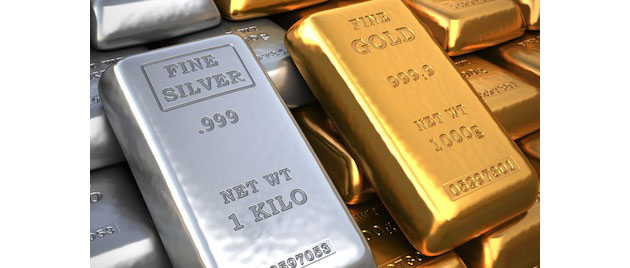The Gold Report: Leily, you are with Scotiabank in Toronto, but you're not originally from that area. Tell us about yourself.
Leily Omoumi: I've been living in Toronto for many years. I earned a degree in mechanical engineering from the University of Toronto and worked as an engineer for Hatch Ltd. for about four years. Following that, I earned a master's degree in business administration at Rotman School of Management. I started working at Scotia immediately after. I have been covering gold stocks for a few years now.
I cover gold stocks and one palladium name: North American Palladium Ltd. (PDL:TSX; PAL:NYSE).
TGR: There has been resurgence in the price of gold, which is now at more than $1,700/ounce (oz). While the price of gold has held up during the past several months, gold equities have languished through the summer. But equity prices have been rebounding in the last several weeks. What are your thoughts on that climb?
LO: You are quite right: Even though the price of gold has held up, a lot of equities suffered earlier in the year. Capital blowup, cost escalation and inflation have hit several stocks. Many companies suffered as investors lost confidence in where costs were trending and development projects progressing.
There has been a nice push to the gold price in the past couple of weeks. Some of the losses have been made up and the market is getting to levels similar to last year's, before stocks really went down.
TGR: We are at the Denver Gold Forum, a great venue for a gathering of institutions, analysts and public companies. It feels like there is a little bit of optimism in the crowd. What do you think?
LO: I agree. Investors have been sitting on the sidelines for quite a while and they're starting to step back in. In April, at the European Gold Forum in Zurich, the mood was very different—more negative. People were watching from the sidelines and waiting to make a move. Investors have more optimism now. They are ready to step into names, primarily those that have free cash flow and are in production or are close to production.
But many pre-producers continue to be punished because of financing risk. Although the markets are doing better, confidence is not fully back. Even companies that have released decent feasibility or prefeasibility studies have not seen moves in their stock prices because of the financing risk. Companies frequently have initial capital requirements that are larger than the market cap of the company. It can take a long time for a company to finance a project in a scenario like that. Unfortunately in some cases, dilution becomes a significant factor.
Pre-producers have to wait for the right opportunity to raise money. They must do it in tranches, which can be a long process. They have a long road ahead.
TGR: Unfortunately, a lot of those companies already have somewhat blown-out stock structures, which further discourage them from doing equity financings because they don't want to dilute shareholders any further. They have to look at royalties and large debt financings. We are seeing a lot of creative financings, but we are also seeing some preproduction and development stories that are spectacular values for large caps. Do you agree?
LO: Yes. Large-cap companies are moving ahead very cautiously, however. They are being scrutinized by investors, too, so they are very careful about the investments they make. I agree that there is great value. The market just needs confidence. A couple of good merger-and-acquisition deals could potentially bring confidence back and encourage others to step in. There are a lot of good names out there.
Two development stories that I like are Lydian International Ltd. (LYD:TSX) and Rainy River Resources Ltd. (RR:TSX.V). I like Lydian because of the low initial capital intensity of its Amulsar project. It's a simple heap-leach project with an initial capital cost of below $300 million (M). Operating costs are below $500/oz. It's a project that can be financed.
TGR: Lydian isn't on a lot of people's radars because of its jurisdiction—Armenia. It certainly is not Nevada or Ontario. Tell us about your comfort level with this company in terms of its location.
LO: I have been to Armenia. Armenia, as you said, is not Nevada. A lot of people are unfamiliar with it, but it appears to be a pretty decent place for mining companies. For example, Dundee Precious Metals Inc. (DPM:TSX) has an operating mine there and other European and private mines operate there currently as well. The country has a modern mining concession law and is open for business. Lydian has not had too much difficulty advancing its permits; it's in the advanced permitting stage now.
TGR: Lydian has drilled, and has an NI-43-101-compliant resource. What are the next steps?
LO: Lydian released a full feasibility study the first week of September. Some of the numbers I mentioned are based on that prefeasibility study. The initial capital came in at around $270M and life-of-mine cash costs are about $470/oz. The project is expected to go into production in early to mid-2015.
Aside from final permitting, the next big step for the Lydian team is financing. The company has to start placing orders for long lead-time equipment early next year.
TGR: Tell us about Rainy River in Ontario.
LO: Rainy River is in a mining-friendly jurisdiction that is familiar to investors. What I like about the Rainy River deposit is that it contains approximately 8 million ounces (Moz) of Measured, Indicated and Inferred resources. It has a lot of optionality; the company proved that with its updated PEA, which came out in late August. It initially expected to have a much larger operation, with about 32,000 tons per day (Kt/day). Rainy River has since reduced the scale of the operation because of capital constraints. It is starting with a smaller operation, at 20 Kt/day.
The company has been able to push a lot of the higher-grade ore ahead for the earlier years of production. That helps with the internal rate of return on the project. It now expects to process an average grade of 1.38 grams/ton (g/t) in the first five years, compared to previous numbers of about 1 g/t. Over the first 10 years of operation grades are expected to average 1.45 g/t—this includes underground.
TGR: Does Rainy River have a lot of exploration potential? Is there still a lot of blue sky?
LO: Absolutely. It has district potential and there are a lot of targets that the company is still looking at. The underground potential is underexplored in my opinion, and the company is still drilling. Although there is an underground portion in the updated PEA, there is a lot more work to be done.
Aside from that, the company is looking at regional targets. There is potential for other metals as well. For example, it is looking at some nickel bearing targets to the south of the current deposit. However, that's down the road and is not something the company is counting on right now. But blue sky is certainly there.
TGR: This seems like a potential acquisition candidate based on its jurisdiction and improved grade.
LO: Given its jurisdiction, the scale of the project, with life-of-mine production at more than 200 Koz, it could definitely move the needle for midsize to larger companies. If a major were to look at Rainy River, it would probably build the project differently. It might start with a larger scale right off the bat and increase production levels. A midtier company would potentially look at the project as outlined in the updated PEA, which is a smaller scale.
Nonetheless, it's the type of project that can move the needle. It is in Ontario. It's not expected to have permitting issues. There is exploration potential. It's a good project all around.
Additionally, I believe Lydian, which we spoke about earlier, could be a potential takeover target. Amulsar is a simple and manageable project and could fit nicely with midtier producers that have familiarity with the region.
TGR: Let's move on to a producer that may not be on the radar of some investors, Dundee Precious Metals. Tell us about Dundee and why you like the story.
LO: I like Dundee Precious Metals because it has production growth, it's a low-cost producer and it has a pipeline of projects. Its largest operation is the Chelopech underground mine in Bulgaria. The company is currently expanding underground operations and we should see a step change in production next year. I expect production—company-wide—to increase by about 20% in 2013 to over 170 Koz. I expect cash costs to be below $450/oz this year and next. What makes this story a little different is that the company also owns a smelter in Namibia, where the gold-copper concentrate from Chelopech is processed.
TGR: How does Dundee get the material from Bulgaria to Namibia?
LO: The concentrate is transported to Bourgas, Bulgaria's largest port on the Black Sea, for sea shipment to Namibia. It is then transported by rail to the smelter from the Atlantic port of Walvis Bay. Tsumeb is one of only a few smelters in the world capable of treating arsenic bearing concentrates such as the one produced at Chelopech. It is a long way to go but when it comes down to it, Dundee is a company that is making money.
Its development project in Bulgaria, Krumovgrad, is going through the permitting stages right now. We expect that to be in production in 2016.
TGR: We have talked about the cautious optimism among institutions that might jump into mining equities or add them to their portfolios. Do you have any thoughts about what you see happening as we go into the fourth quarter of 2012?
LO: I think optimism is starting to come back, but it is going to take a while. Third-quarter (Q3/12) financial results should be decent. However, I cover some West African names, and Q3/12 could be relatively weak for some of those companies because of heavy rains that the region has been experiencing.
Going forward, a lot of the midtier and large-cap producers are expected to have a good Q4/12. Many have had heavy backend-loaded years. The combination of optimism in the market, the stronger gold price and better results toward the end of the year is going to have an overall positive impact on the market and the inflow of funds to the sector.
TGR: Some North American investors don't understand the potential in West Africa. Do you feel like West Africa—Côte d'Ivoire, Burkina Faso, Ghana—represents an opportunity in terms of mineral wealth and share price appreciation for juniors that are developing projects or producing there? Is it a misunderstood jurisdiction?
LO: There is significant mineral potential in that part of the world. However, in certain countries, there are higher-than-average cash costs due to limitations with infrastructure and power costs. Political risk in some regions is the other issue to consider. There have been a number of blowups in West Africa politically, including in Mali and Côte d'Ivoire. That has drained some confidence and I don't see that changing quickly going forward. Companies with a lower risk profile in North America and parts of South America, and companies with access to good infrastructure and lower power costs, will trade at a higher premium, in my opinion.
TGR: Are the political risks in West Africa higher than the risks in, for instance, regions surrounding Armenia or Bulgaria?
LO: It is hard to generalize, because you have to look country by country. I think the perceived risk in West Africa is a little overblown. Companies even in Bulgaria have had permitting issues in the past. However, Bulgaria is pretty stable politically and has excellent infrastructure. I wouldn't necessarily compare Bulgaria to countries in West Africa. Ghana is an exception. It is a very stable country with a very established mining industry.
TGR: Do you think West African countries get too much of a discount sometimes?
LO: I don't necessarily disagree with that statement. Some investors are not familiar with countries in West Africa. They tend to put all of them in one basket. If something happens in Mali, shares of a company with an asset in Burkina Faso also fall—when there is really no relation or connection. In general, European investors are probably a little bit more in tune with what is going on in Africa.
TGR: Thank you, Leily.
LO: Thank you.
Leily Omoumi, a gold analyst with Scotiabank in Toronto, holds a degree in mechanical engineering from University of Toronto and a Master of Business Administration degree from the Rotman School of Management.
Want to read more exclusive Gold Report interviews like this? Sign up for our free e-newsletter, and you'll learn when new articles have been published. To see a list of recent interviews with industry analysts and commentators, visit our Exclusive Interviews page.
DISCLOSURE:
1) Sally Lowder of The Gold Report conducted this interview. She personally and/or her family own shares of the following companies mentioned in this interview: None.
2) The following companies mentioned in the interview are sponsors of The Gold Report: Lydian International Ltd. Streetwise Reports does not accept stock in exchange for services. Interviews are edited for clarity.
3) Leily Omoumi: I personally and/or my family own shares of the following companies mentioned in this interview: None. I personally and/or my family am paid by the following companies mentioned in this interview: None. I was not paid by Streetwise Reports for participating in this interview.




























































